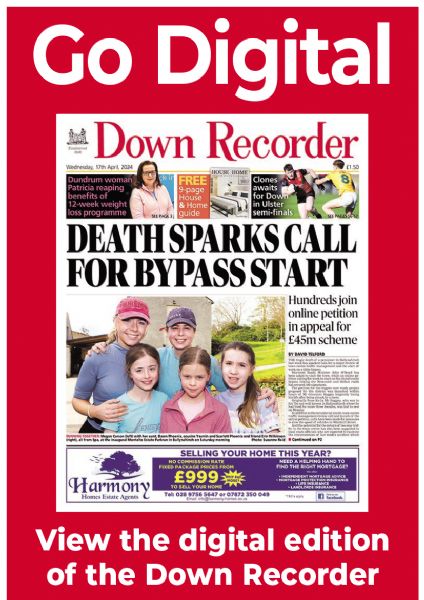Battle lines are drawn in South Down
Battle lines are drawn in South Down
18 January 2017
IT took just two hours for the first shots to be fired in the South Down election campaign.
Just after Secretary of State James Brokenshire unveiled March 2 as the date for the snap election, South Down SDLP MLA, Sinead Bradley, launched a hard-hitting attack on fellow constituency MLA, Chris Hazzard, criticising the Sinn Fein politician’s performance as Stormont’s Infrastructure Minister.
It marked the start of what is likely to be a bruising election campaign which will be fought in uncharted waters for the politicians. For the first time since the creation of the modern Assembly, the voters will be electing just five MLAs per constituency, rather than six, which is provoking much head scratching among the number crunchers in each party.
In recent South Down elections the voters have returned two from Sinn Fein, two from the SDLP, one from the DUP and one from the Ulster Unionists, but at the end of counting on March 3 one of those parties is going to be gravely disappointed.
Sinn Fein was first out of the campaigning blocks by holding an election convention in Hilltown on Sunday night which produced the first surprise of the poll. Veteran MLA, Caitriona Ruane, announced she was not standing and has been replaced by Newry, Mourne and Down councillor Sinead Ennis.
She is a relative newcomer to politics having fought her first election in the Crotlieve area in 2014. But her strong showing on the hustings — almost topping the poll — and her performance within the council over the past two years, has meant her elevation to the Assembly ballot ticket.
She will be running alongside the high profile outgoing Minister, Chris Hazzard, who is widely regarded as one of the up-and-coming members of Sinn Fein. It is widely accepted the Drumaness man has had a successful spell as Infrastructure Minister and, baring any campaign disasters, will easily be returned to the slimmed down Assembly of 90 MLAs.
The SDLP is expected to announce shortly that sitting MLAs Colin McGrath, from Downpatrick, and Sinead Bradley, from Warrenpoint, will again be it’s standard bearers, but the nationalist party will replicate Sinn Fein’s decision not to field three candidates. With just five being elected both parties are wary of splitting their vote.
Bradley, the daughter of veteran SDLP politician PJ Bradley, just pipped Hazzard as poll topper nine months ago and her election is as certain as Hazzard’s.
The top Unionist in the 2016 election was the DUP’s Jim Wells who had the distinction of being the first person elected. Wells is the father of the house at Stormont — the longest serving politician in the Assembly — and has a loyal following in South Down which, provided he can stay away from controversy, will almost certainly see him returned.
Ulster Unionists are hoping the RHI scandal may persuade some DUP supporters to decamp to them, but Wells is extremely strong in South Down and the likelihood of his vote ping to any meaningful extent is slim.
With Hazzard, Bradley and Wells set to take the first three seats the final two are difficult to call.
Vying for at seat in the Stormont chamber are Ennis and McGrath along with the Ulster Unionists’ Harold McKee.
McKee, the former quarry manager from Kilkeel, is fighting his second Assembly election. He is a dyed in the wool Mourne man which will stand him in good stead as he fights for a Unionist vote predominantly located south of Newcastle.
The decision of independent Unionists Henry Reilly and John McCallister not to run makes McKee’s task, while uphill, all the easier. Reilly and McCallister secured 3,874 votes between them and while those votes will be split between Wells, McKee and Alliance’s Patrick Brown, they could be enough to see the Ulster Unionist elected.
With only five MLAs being elected the quota will be considerably higher than in 2016, possibly as much as 1,000 votes higher if the turn out of 53.8% stays the same.
This means it will be much more difficult for Ennis, McGrath and McKee to hit that magic number and it is possible the final two seats could be decided below the quota.
One key influencer in the poll will be the performance of Alliance. The party has been enjoyed a resurgence in South Down and Brown’s performance in 2016 was the party’s best for some time.
Alliance is hopeful Brown will pick up disgruntled voters, sickened by the RHI debacle, and while it is unlikely be enough to have him elected, his second preferences could be crucial, especially for McKee.
Of critical importance to all the parties, but particularly the Ulster Unionists, will be the size of the turnout.
Last year it stood at just over 53% but a drop off could pose major problems for several of the candidates.

